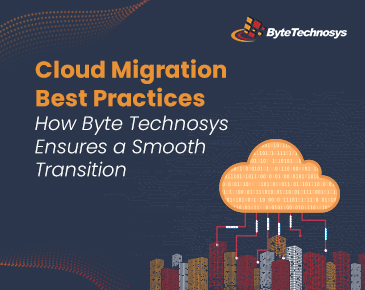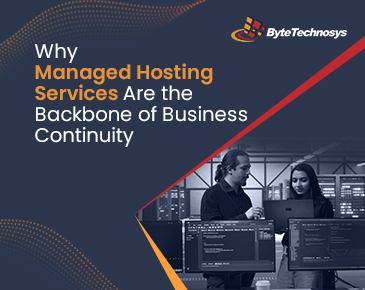
Introduction
In the modern digital era, IT infrastructure management is the backbone of modern businesses, ensuring seamless operations, data management, and security. Whether a small startup or a large enterprise, managing IT infrastructure effectively is crucial for optimizing performance, reducing risks, and enhancing scalability. This guide explores IT infrastructure management, its key components, types, importance, challenges, and future trends.
What is IT Infrastructure Management?
IT infrastructure management refers to the administration and oversight of the technology systems, networks, software, and services that support an organization’s IT environment. It includes managing servers, databases, cloud solutions, cybersecurity, and compliance requirements to ensure business continuity and efficiency.
Key Components of IT Infrastructure Management
Hardware Management
- Servers, data centers, computers, and storage devices.
- Networking devices such as routers, switches, and firewalls.
Software Management
- Operating systems (Windows, Linux, macOS).
- Business applications, including ERP and CRM software.
- Security software like firewalls, antivirus, and encryption tools.
Networking Management
- Wired and wireless networks for seamless communication.
- VPNs (Virtual Private Networks) for secure remote access.
- Internet service providers (ISPs) and network infrastructure.
Data Storage & Management
- On-premises and cloud storage solutions.
- Database management systems (SQL, NoSQL).
- Backup and disaster recovery solutions.
Security & Compliance
- Firewalls and intrusion detection systems (IDS/IPS).
- Compliance with industry regulations (GDPR, HIPAA, ISO 27001).
- Data encryption and multi-factor authentication.
Monitoring
- Monitor IT infrastructure for uptime, capacity and performance monitoring
- Alerts and incident management
- Remediation of alerts and follow escalation procedures.
Types of IT Infrastructure Management
Traditional On-Premises IT Infrastructure
- Physical servers, storage, and networking hosted in business facilities.
- High control over security and data management.
- Requires extensive maintenance and infrastructure investments.
Cloud-Based IT Infrastructure
- Public, private, and hybrid cloud solutions.
- Provides flexibility, scalability, and cost-effectiveness.
- Reduces dependency on physical infrastructure.
Hyperconverged IT Infrastructure
- Integrates computing, storage, and networking into a single system.
- Simplifies IT management and enhances scalability.
- Suitable for businesses seeking a streamlined infrastructure solution.
Importance of IT Infrastructure Management in Business
A well-managed IT infrastructure plays a crucial role in business success. Here’s why it is essential:
Enhances Operational Efficiency
Effective IT infrastructure management ensures that business processes run smoothly without interruptions. Automated systems, cloud-based applications, and high-speed networks improve efficiency by reducing manual tasks and streamlining workflows.
Strengthens Data Security & Compliance
IT infrastructure management includes security features such as firewalls, encryption, and multi-factor authentication, which protect sensitive business data from cyber threats. Compliance with industry regulations like GDPR and HIPAA ensures that businesses handle customer data responsibly, avoiding legal penalties.
Supports Business Growth & Scalability
As businesses expand, their IT needs grow as well. Scalable IT infrastructure management allows companies to add more resources, such as cloud storage or additional servers, without disrupting ongoing operations. This flexibility helps businesses adapt to changing market demands efficiently.
Facilitates Digital Transformation
Modern IT infrastructure management enables businesses to embrace digital tools such as AI, machine learning, and IoT. Cloud computing and remote collaboration platforms make it easier for businesses to operate in a digital-first world, improving competitiveness and innovation.
Improves Customer Experience
Fast, secure, and reliable IT infrastructure ensures better service delivery. Websites load faster, applications run smoothly, and customer queries are resolved quickly, leading to higher customer satisfaction and loyalty.
Minimizes Downtime & Reduces Costs
A well-maintained IT infrastructure prevents unexpected system failures and downtime, which can be costly for businesses. Regular updates, proactive monitoring, and automated backups help prevent disruptions and ensure business continuity.
Security in IT Infrastructure Management
Security is a critical aspect of IT infrastructure management, as businesses rely heavily on digital systems to manage operations and store sensitive data. A strong security framework ensures the protection of assets, customer data, and proprietary business information.
Cyber Threats & Risks
Organizations face a range of cybersecurity threats, including malware, ransomware, phishing attacks, and insider threats. A well-implemented IT security strategy helps mitigate these risks.
Best Security Practices
- Implementing firewalls, antivirus, and intrusion detection systems.
- Using multi-factor authentication (MFA) for added login security.
- Encrypting data to prevent unauthorized access.
- Conducting regular security audits and vulnerability assessments.
Compliance & Regulations
Businesses must adhere to security regulations such as GDPR, HIPAA, and ISO 27001 to ensure data privacy and security. Compliance helps build trust with customers and partners while reducing legal risks.
Compliance & Regulations
A significant percentage of security breaches occur due to human errors. Regular security training for employees can help them recognize potential threats and follow best practices to prevent cyber attacks.
Common IT Infrastructure Management Challenges
- High Costs: Initial setup and maintenance expenses can be significant.
- Cybersecurity Threats: Increased risk of data breaches, ransomware, and phishing attacks.
- Compatibility Issues: Integrating legacy systems with modern solutions.
- Scalability Needs: Difficulty in upgrading or expanding infrastructure without disruptions.
- Downtime & Performance Issues: Unplanned outages affecting business continuity.
Best Practices for Effective IT Infrastructure Management
- Assess Business Needs: Define infrastructure requirements based on operational goals.
- Invest in Reliable Hardware & Software: Ensure compatibility and future-proofing.
- Implement Robust Cybersecurity Measures: Regular security audits, firewalls, and data encryption.
- Regular Updates & Maintenance: Keep systems updated to prevent vulnerabilities.
- Leverage Cloud Computing: Enhance flexibility, reduce costs, and improve scalability.
- Train Employees on IT Best Practices: Reduce human errors and security risks.
Future Trends in IT Infrastructure Management
- AI and Automation: Intelligent monitoring, predictive maintenance, and self-healing systems.
- Edge Computing: Faster processing by bringing computing closer to data sources.
- Hybrid and Multi-Cloud Strategies: Businesses leveraging a mix of cloud solutions for better flexibility.
- Zero-Trust Security Model: Enhanced security with continuous authentication and verification.
- 5G and IoT Integration: Increased connectivity, speed, and data-driven insights.
Conclusion
Effective IT infrastructure management is crucial for businesses to stay competitive, secure, and agile in today’s fast-paced digital world. As technology continues to evolve, companies must regularly evaluate and update their IT environments to meet operational needs and stay ahead of security challenges. By adopting best practices and leveraging advanced solutions such as cloud computing and AI-driven automation, businesses can build a resilient, scalable, and future-ready IT infrastructure.
At ByteTechnosys Pvt. Ltd., we specialize in transforming IT infrastructures to enhance security, streamline operations, and drive business growth. Whether you’re looking for cloud solutions, robust cybersecurity measures, or a complete IT overhaul, our expert team is dedicated to supporting your business goals and ensuring your IT infrastructure is optimized for the future.



